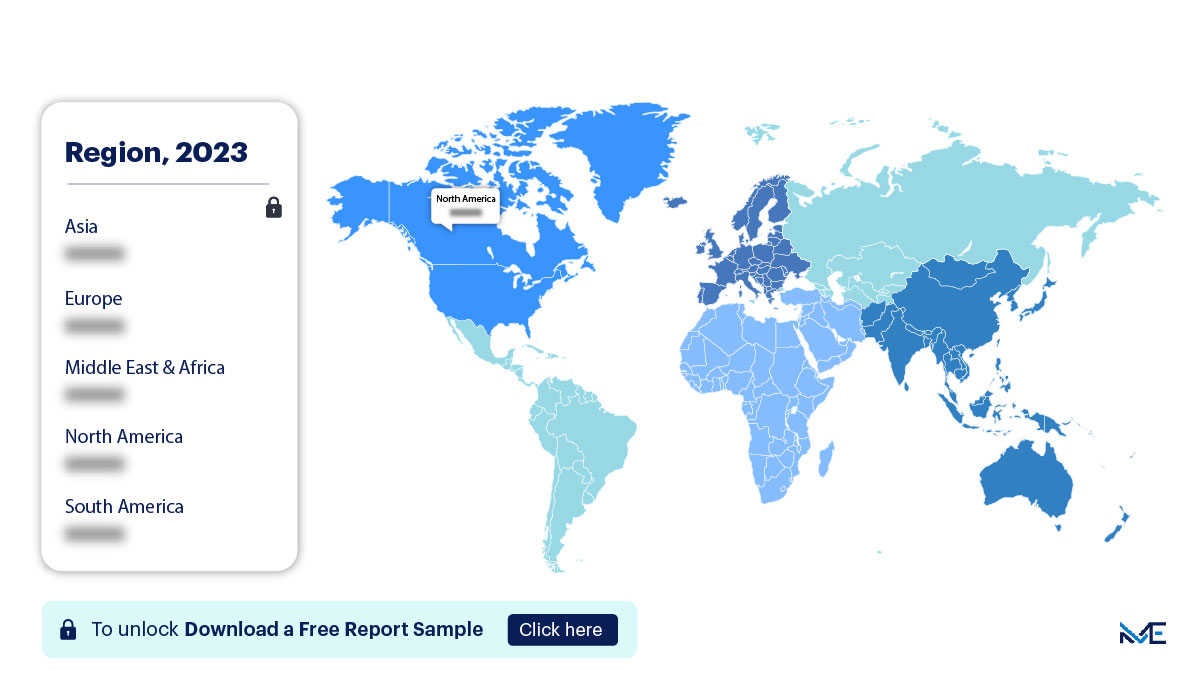Market Snapshot
| Study Period | 2019-2032 |
| Base Year | 2023 |
| Forcast Year | 2023-2032 |
| CAGR | 6.4 |


Gain accurate insights regarding the negative impacts of COVID-19 on all markets and industries
Download Sample PdfReport Overview
The Gas Hydrates Market is anticipated to experience growth at a CAGR of 6.78% between 2022 and 2032. During this period, the market size is projected to expand by USD 12,590.87 million. The market's trajectory is influenced by various factors, including the increasing exploration activities in offshore reserves, the potential of gas hydrates as an alternative energy source, and advancements in drilling and extraction technologies. Gas hydrates are ice-like compounds in which gas molecules are trapped within a crystalline structure of water molecules. They typically consist of methane and water molecules and have garnered significant attention due to their energy potential and the challenges associated with their extraction.
Gas Hydrates Market Overview:
Drivers:
The escalating exploration activities in offshore reserves are a pivotal driver for the growth of the gas hydrates market. As conventional oil and gas reserves become more challenging to access, the exploration of unconventional energy sources, including gas hydrates, gains prominence. Substantial offshore gas hydrate deposits have been identified, particularly in regions like the Arctic and subsea permafrost areas, leading to increased research and investment in extraction technologies.
Furthermore, the potential of gas hydrates as an alternative energy source is driving market growth. Gas hydrates contain vast amounts of methane, a potent greenhouse gas, which can be harnessed as a cleaner-burning fuel. As global energy demand continues to rise, the utilization of gas hydrates as a viable energy resource could significantly impact the energy landscape.
Trends:
Advancements in drilling and extraction technologies are shaping the growth of the gas hydrates market. Innovations in drilling techniques, including extended reach drilling and well design optimization, enable more efficient and cost-effective extraction of gas hydrates from deep-sea reservoirs. Additionally, the development of specialized equipment and systems for hydrate dissociation and gas recovery is enhancing the feasibility of gas hydrate extraction.
Moreover, research efforts are focused on understanding the behavior of gas hydrates in various geological and environmental conditions. This knowledge is critical for ensuring safe and sustainable extraction while mitigating potential environmental and operational risks.
Restraints:
Environmental and technical challenges pose significant restraints to the gas hydrates market. Gas hydrates are found in deep-sea and permafrost regions, which are often sensitive and ecologically important environments. The extraction process has the potential to disturb these ecosystems and release methane, a potent greenhouse gas, into the atmosphere.
Furthermore, the complex and unpredictable nature of gas hydrate reservoirs presents technical challenges for extraction. The dissociation of gas hydrates requires careful control of pressure and temperature conditions to avoid disruptions, operational hazards, and equipment damage.
Gas Hydrates Market Segmentation by Application:
The energy production segment is projected to witness substantial growth during the forecast period. Gas hydrates hold significant potential as an unconventional energy resource. Their vast methane content makes them a potential source of natural gas, which can contribute to meeting global energy demands while reducing reliance on traditional fossil fuels.
Gas Hydrates Market Segmentation by Type:
The offshore segment is experiencing notable growth driven by the abundance of offshore gas hydrate reserves. Gas hydrates are commonly found in deep-sea environments, particularly in regions with low temperatures and high pressures, making offshore extraction a primary focus for research and development efforts.
Regional Overview:

Download the report summary now!
Request pdf Sample
The Asia-Pacific (APAC) region is expected to contribute significantly, accounting for 48% of the global gas hydrates market's growth during the forecast period. APAC's dominance is attributed to its substantial offshore gas hydrate reserves, particularly in countries like Japan and India. These nations have initiated research and development programs aimed at exploring and harnessing the potential of gas hydrates as an energy source.
The COVID-19 pandemic's impact on the gas hydrates market varied across regions. While initial disruptions affected research and exploration activities, the gradual recovery and adaptation of the industry led to renewed focus on unconventional energy sources like gas hydrates.
Gas Hydrates Market Customer Landscape:
The gas hydrates market's customer landscape encompasses government agencies, research institutions, energy companies, and technology providers. Research institutions and energy companies are at the forefront of gas hydrate exploration and development, driven by the potential economic and environmental benefits of this unconventional energy source.
Major Gas Hydrates Market Companies:
Companies in the gas hydrates market are engaging in partnerships, research collaborations, and technology development to unlock the potential of this unconventional energy source.
- BP plc
- ConocoPhillips Company
- Exxon Mobil Corporation
- Gazprom
- Japan Oil, Gas and Metals National Corporation (JOGMEC)
- Schlumberger Limited
- TotalEnergies SE
- U.S. Department of Energy (DOE)
The competitive landscape of the gas hydrates market is marked by joint ventures, research initiatives, and exploration projects aimed at developing safe and effective methods for gas hydrate extraction and utilization.
Segment Overview:
The gas hydrates market report provides revenue forecasts at global, regional, and country levels, analyzing trends and growth opportunities from 2019 to 2032.
- Application Outlook (USD Million, 2019 - 2032):
- Energy Production
- Industrial Use
- Others
- Type Outlook (USD Million, 2019 - 2032):
- Offshore
- Permafrost
- Geography Outlook (USD Million, 2019 - 2032):
- North America
- The U.S.
- Canada
- Europe
- U.K.
- Norway
- Rest of Europe
- APAC
- Japan
- India
- China
- Rest of APAC
- South America
- Brazil
- Argentina
- Rest of South America
- Middle East & Africa
- Qatar
- UAE
- Rest of Middle East & Africa
RESEARCH METHODOLOGY
A research methodology is a systematic approach for assessing or conducting a market study. Researchers tend to draw on a variety of both qualitative and quantitative study methods, inclusive of investigations, survey, secondary data and market observation.
Such plans can focus on classifying the products offered by leading market players or simply use statistical models to interpret observations or test hypotheses. While some methods aim for a detailed description of the factors behind an observation, others present the context of the current market scenario.
Now let’s take a closer look at the research methods here.
Secondary Research Model
Extensive data is obtained and cumulated on a substantial basis during the inception phase of the research process. The data accumulated is consistently filtered through validation from the in-house database, paid sources as well reputable industry magazines. A robust research study requires an understanding of the overall value chain. Annual reports and financials of industry players are studied thoroughly to have a comprehensive idea of the market taxonomy.
Primary Insights
Post conglomeration of the data obtained through secondary research; a validation process is initiated to verify the numbers or figures. This process is usually performed by having a detailed discussion with the industry experts.
However, we do not restrict our primary interviews only to the industry leaders. Our team covers the entire value chain while verifying the data. A significant number of raw material suppliers, local manufacturers, distributors, and stakeholders are interviewed to make our findings authentic. The current trends which include the drivers, restraints, and opportunities are also derived through the primary research process.
Market Estimation
The market estimation is conducted by analyzing the data collected through both secondary and primary research. This process involves market breakdown, bottom-up and top- down approach.
Moreover, while forecasting the market a comprehensive statistical time series model is designed for each market. Macroeconomic indicators are considered to understand the current trends of the market. Each data point is verified by the process of data triangulation method to arrive at the final market estimates.
Final Presentation
The penultimate process results in a holistic research report. The study equips key industry players to undertake significant strategic decisions through the findings. The report encompasses detailed market information. Graphical representations of the current market trends are also made available in order to make the study highly comprehensible for the reader.
Personalized Business Report Tailored to Your Requirements
- Our expert analysts collaborate directly with you to comprehend your specific needs.
- Get data on regions, segments, competitors, and vendors of your choice.
- Information is presented in alignment with your exact preferences and formatting.
Free Sample Report
"Find new revenue generation opportunities"

